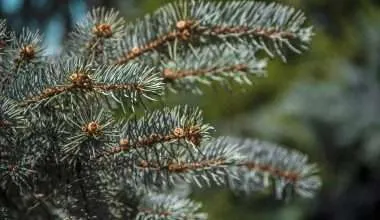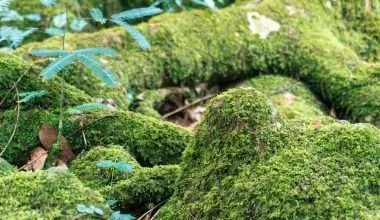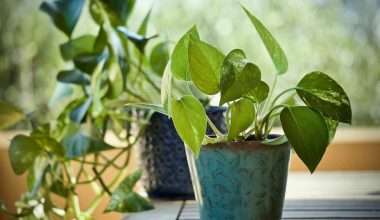Table of Contents Show
Palm trees, belonging to the Botanical family of lianas and shrubs, are tall fruit-bearing trees. These trees can usually be found in tropical and arid regions.
There are 2,600 types of palm trees, but most people are familiar with two commonly known variants: Date and Coconut Palm.
Many people consider adding a cold hardy palm tree to their landscaping, given their beautiful leaves, delicious fruits, and longevity.
Palm oil, extracted from the fruit of palm trees, is used in beauty products, food manufacturing, and biofuel.
With an increasingly growing interest in palm trees, the following questions arise: what are the different kinds of palm trees and how much do they cost, how long do they take to grow, and do all of them bear fruits (dates)?
Let’s tackle these questions one by one.
How Much Do Different Kinds of Palm Trees Cost?
In this section, we will closely examine the different types of palm trees and their respective prices.
1. Chinese Windmill Palm
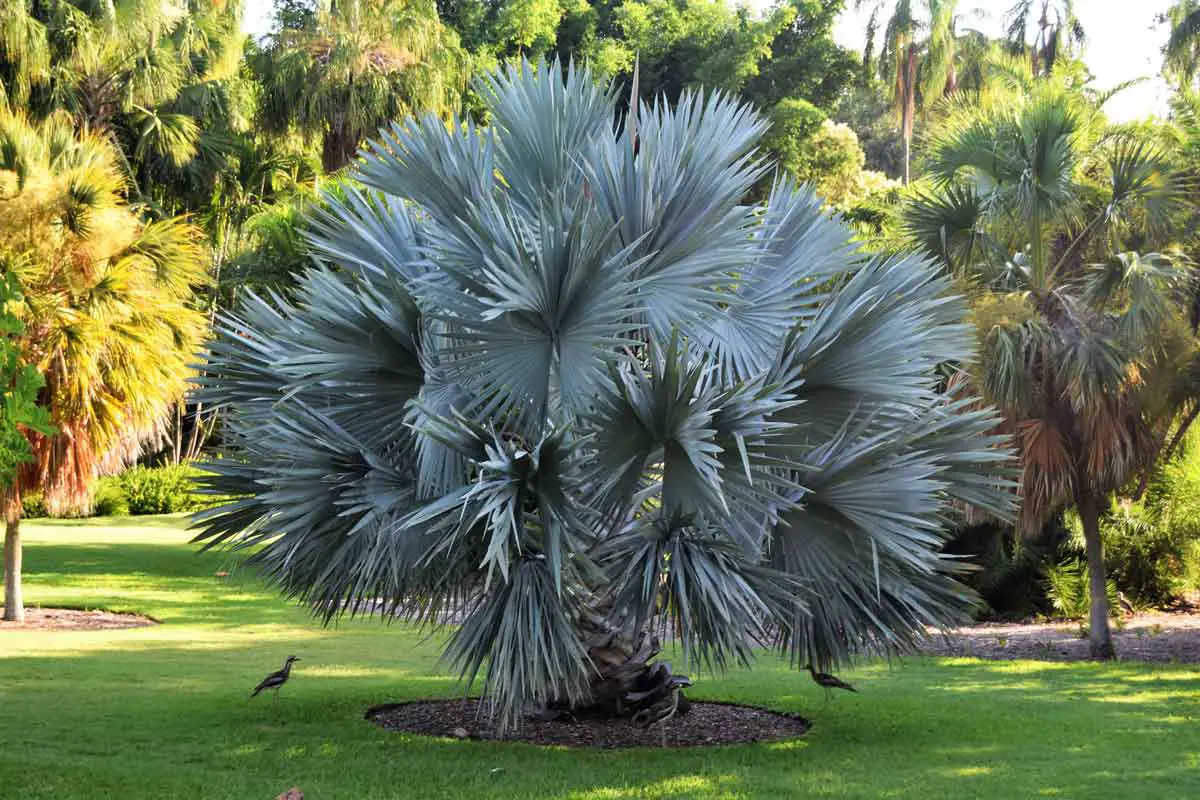
Cost: The cost of a Chinese Palm usually ranges from $60 to $66.
Chinese Palms are a type of Indoor Palm Tree, which are distinctively known for their beautiful leathery leaves. Although these palms have a slower growth rate than other species of palm trees, a Chinese Palm can reach a height of 15 to 17 feet upon being fully mature.
These palms grow the fastest in areas that receive the most sunlight; however, Chinese Palms that are yet to mature can even survive in the shade.
According to many gardeners and gardening enthusiasts, you should use a mild fertilizer on Chinese Palms towards the end of the spring and summer months.
2. Canary Island Date Palms (Phoenix canariensis)
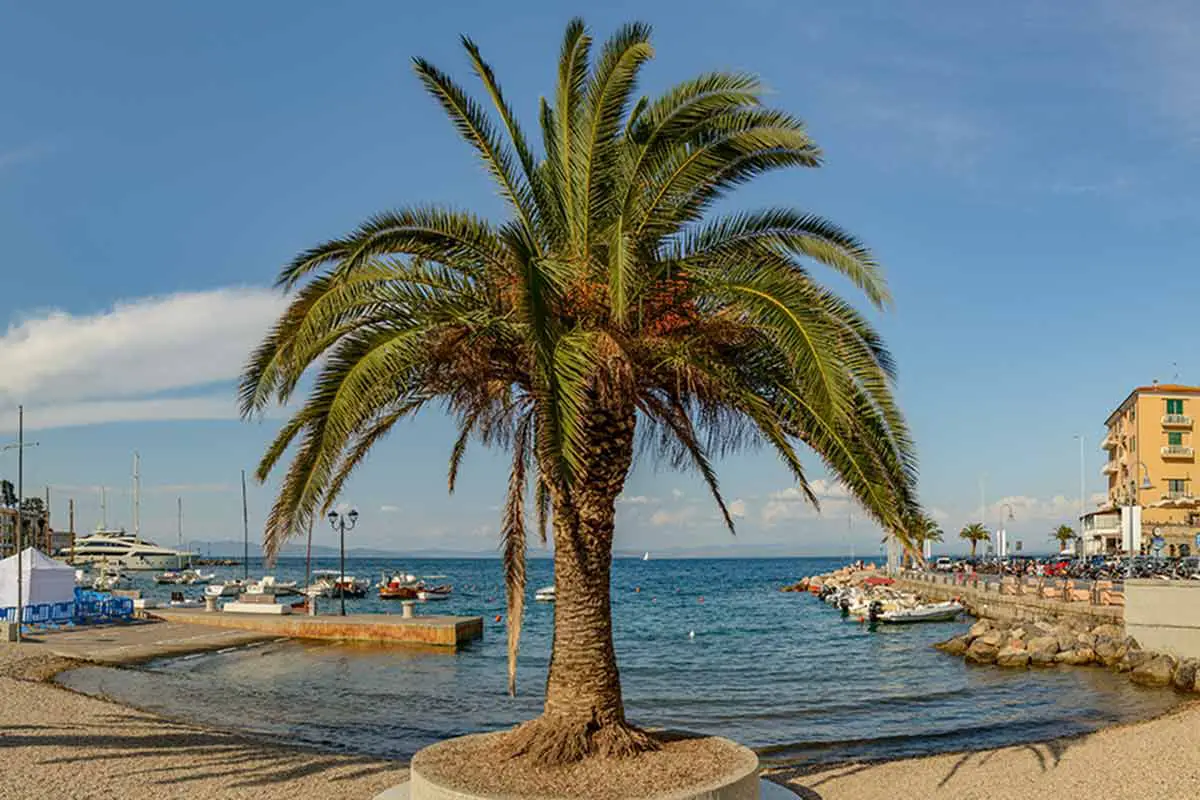
Price: The cost of a Canary Island Date Palm usually ranges from $15 to $100.
You’re in luck if you want a fruit-bearing palm tree. Canary Island Date Palms may grow up to 70 feet tall and yield their namesake dates if cared for properly.
If you’re going to plant Canary palm trees in your garden, you’ll need plenty of space. These trees may grow up to 65 feet (20 metres) tall and spread up to 40 feet.
A Canary Island Palm costs $15 at 12 inches, $40 at 24 inches, and $100 at 36 inches. As one might imagine, the palm cost rises in lockstep with the palm’s height.
3. Parlor Palm (Chamaedorea elegans)
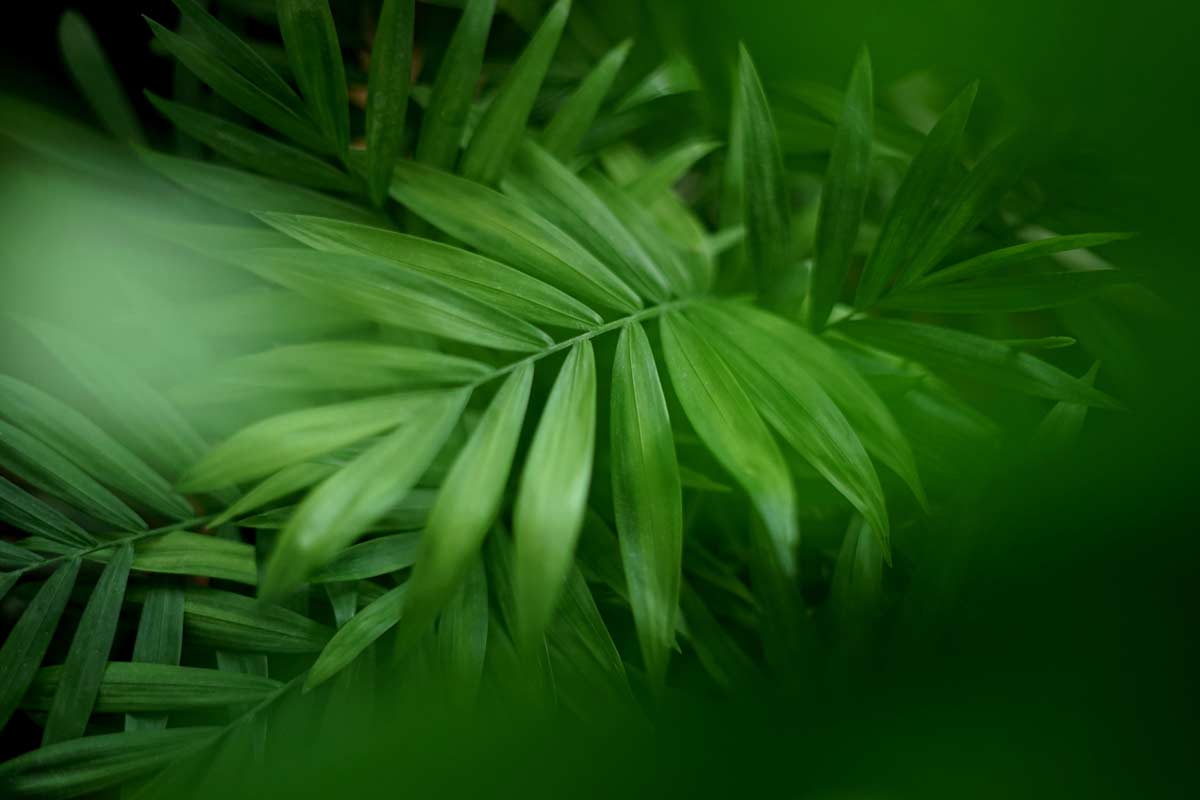
We chose to highlight the leaves of the parlor palm here, because that’s what I wanted you to focus on!
My houseguests often ask me about the plant and it’s almost always the leaves that catches their eye.
Cost: The cost of a Parlor Palm tree usually ranges from $15 to $80.
Parlor Palms are another type of Indoor Palm Tree, and they thrive in such settings.
In general, Parlor Palms exhibit the best growth in areas high in humidity.
These palms are incredibly low-maintenance, as they do not require frequent pruning and have an great growth rate under indoor light.
The only downside to having a Parlor Palm is that they tend to attract pests such as spider mites into your home.
However, the good news is that this hazard is easily avoidable by ensuring that the plant is not left dry for too long and the branches are kept tidy.
Majesty Palm is also a great indoor plant, with lush green foliage. It is slow-growing and loves to grow in humid areas.
4. Triangle Palms (Dypsis decaryi)
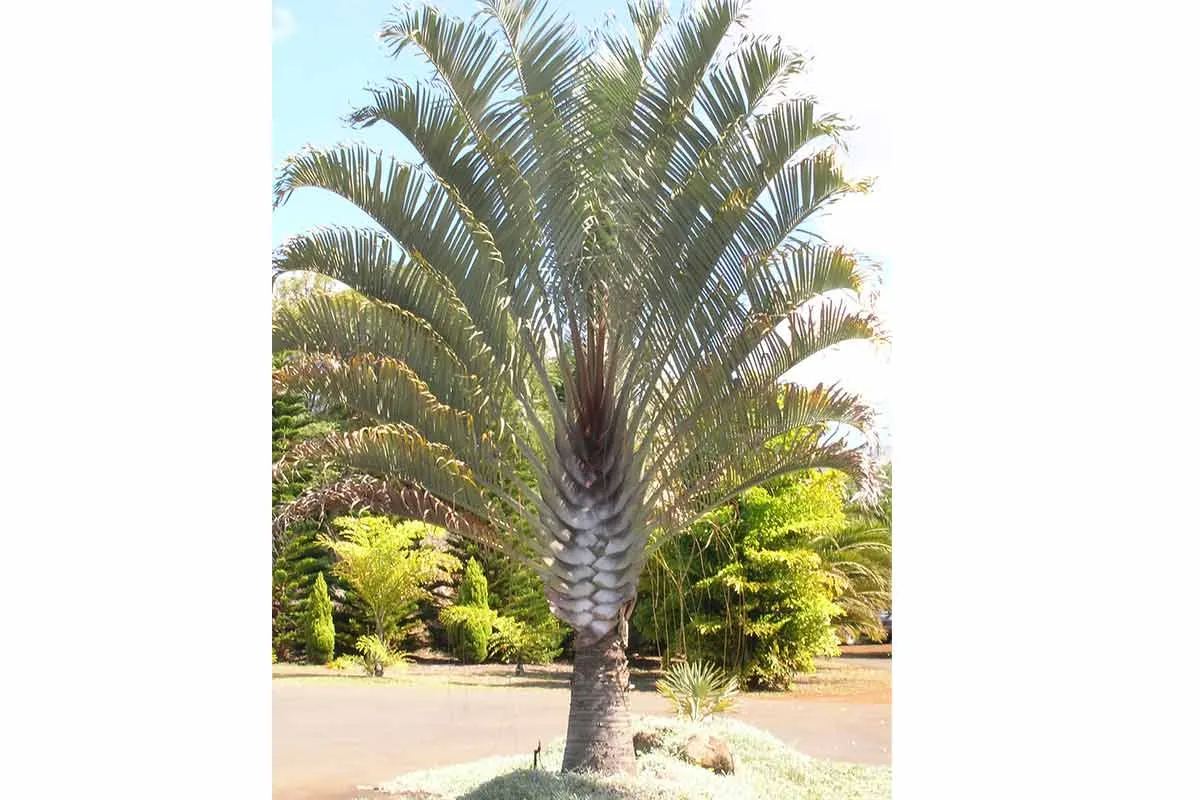
Cost: The cost of a Triangle Palm usually ranges from $250 or more.
Triangles, as opposed to traditional Crownshafts, feature overlapping leaf bases that develop on three different sides. The leaves and stems have a distinctive powder blue-gray or gray-green color.
This palm constantly draws attention, providing a beautiful focal point wherever you choose to plant it. However, this also means that it will distract attention away from other components in the landscape.
A Triangle Palm’s pricing will vary depending on where you purchase it.
Because these palms reach a maximum height of 20 feet, they are popular and easy-to-care-for palms to plant in your yard and mostly have a higher palm cost.
5. Pygmy Palm
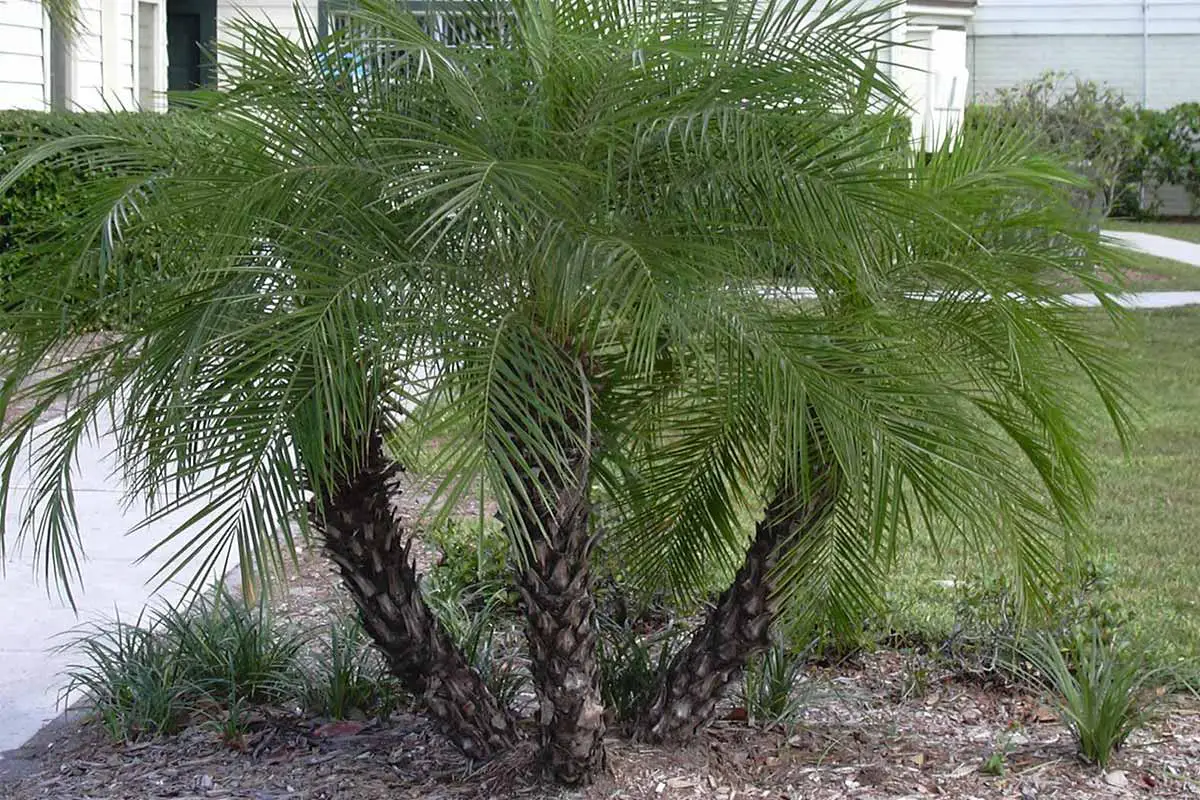
Cost: The cost of a Pygmy Palm usually ranges from $50 to $55.
Commonly found in Southeast Asia, Pygmy Palms can grow as tall as 10 feet in the great outdoors and between 3 to 6 feet in indoor settings.
These palms are usually described as majestic because of their massive trunks and extended leaves. Pygmy Palms, categorized as a type of feathered palm, have a moderate to slow growth rate.
Pygmy Palms should be grown in an area with the perfect balance of shade and sunlight to utilise these plants to the best of their abilities. These palms need to receive an abundant amount of indirect sunlight.
Pygmy palms have sensitive roots, so they should not be frequently replanted and should be kept rootbound.
6. Royal Palms

Cost: The cost of a Royal Palm usually ranges from $200 to $250.
Many warm, coastal settings, notably in southern Florida and portions of California, are filled with royal palm palms. The tree derives its regal moniker as the aristocrat of palm trees due to its grand appearance in the environment.
There are a variety of palm trees, known as the California fan palm tree’, a native tree of Los Angeles. It naturally grows across the palm coast of southern California and spreads further up north to other cities in the United States.
Averaging 50 to 70 feet in height, Royal Palms are among the tallest palm species. It’s essential to note that Royal Palms’ price depends on their height at the time of purchase.
7. Kentia Palm
Cost: The cost of a Kentia Palm usually ranges from $100 to $400. It is an expensive palm tree category.
Kentia Palms can grow to be as tall as one foot and have vast leaves. Their feather-like leaves have small fronds and are very similar to those of Chinese Palms.
Although these palms can grow to be extremely tall, the growth process is slow and usually takes years.
Considering their slow growth rate, you do not need to re-pot your Kentia Palm, but these palms do need a set of frons every year. Moreover, Kentia Palms need to be watered daily.
According to professional instructions, while watering the plant, the upper layer of the soil should be thoroughly dried out and misted frequently to increase the level of humidity.
Native to Australia, Kentia Palms are also referred to as Paradise Palm or Paradise Tree by the Australians.
Kentia Palms thrive in direct and indirect sunlight, and on some rare occasions, they can also endure meager light.
8. Fishtail Palm
Cost: The cost of a Fishtail Palm usually ranges from $80 to $100.
This is an example of a feathered palm. At first glance, though, they do not look feathered. Unlike ordinary palm trees, the foliage of fishtail palms mimics fishtails, thus explaining where the name comes from.
They are not suitable for colder climates and can only endure temperatures of up to 32 degrees Fahrenheit. Fishtail palms may grow to be 15 to 20 feet tall on average and are usually large enough to be easily moved.
As a result, you should not consider growing this plant unless you reside in a tropical area.
Fishtail palms are most commonly found in regions of the Pacific, Asia, and India. Interestingly though, they can now also be found in some areas of the Caribbean and Florida.
If you plan on growing a Fishtail Palm, the best course of action is to grow it in a container.
There is a huge population of palm trees growing in Florida, that resembles the Caribbeans.
The beaches look stunning with their pearly sand and towering tropical flora, such as the West Palm Beach, Daytona Beach, Ormond Beach and Flagler Beach.
The palm beach of Key Biscayne has a lush tropical forest and is a must-see sight. One of the most common landscape palms in Florida is the pygmy date tree. It is a dwarf palm with green foliage and produces yellow flowers with purple dates.
Others include the Foxtail palm and the Pineapple palm.
9. Sentry Palm
Cost: The cost of a Sentry Palm usually ranges from $159 to $360.
The fronds of sentry’s palms are usually connected, and the leaves are somewhat curled. This is why they are commonly referred to as curly palms.
Sentry Palm’s growth rate ranges from moderate to sluggish. It can reach great heights of up to 10 feet or more in most situations, which is quite tall for an indoor plant.
This plant’s size and structure make it a focal point in lobbies, retail malls, and corporate entrance gates. If you intend to grow it inside, make sure it gets enough indirect light, and you mist it frequently.
10. Needle Palm
Cost: The cost of a Sentry Palm usually ranges from $25 to $100.
Needle palms are excellent plants to grow in cold regions. It is resilient and can thrive in virtually any soil type. In most circumstances, the Needle Palm can tolerate temperatures as low as -5 degrees Fahrenheit.
It may even grow in totally shady places once matured. However, keep in mind that Needle Palms require a lot of room to develop. Their needle-shaped leaves distinguish these palms.
This may not be an ideal indoor plant because the leaves are clumped straight from the ground. You can; however, attempt to grow them in your indoor garden.
The tree grows slowly and thrives best when watered often. It should be noted that it is not resistant to salt spray. So, if you live near water, you should think about avoiding any such risk.
11. Diamond Palm
Cost: The cost of a Diamond Palm usually ranges between $100 or more.
The Diamond Palm is distinguishable for its enormous leaves. At first, the plant will appear to be immediately rising from the ground. However, it does come with a trunk, but it is mainly hidden beneath the ground level because the trunk is underground.
Diamond Palms may be found in abundance in the jungles of Thailand, Malaysia, and other Southeast Asian nations. They often grow in the shadow, just beneath more giant trees.
If you intend to grow these trees in your formal gardens, make sure they get enough shade and humidity. It would be best if you also watered it at least once every day.
12. Bottle Palm
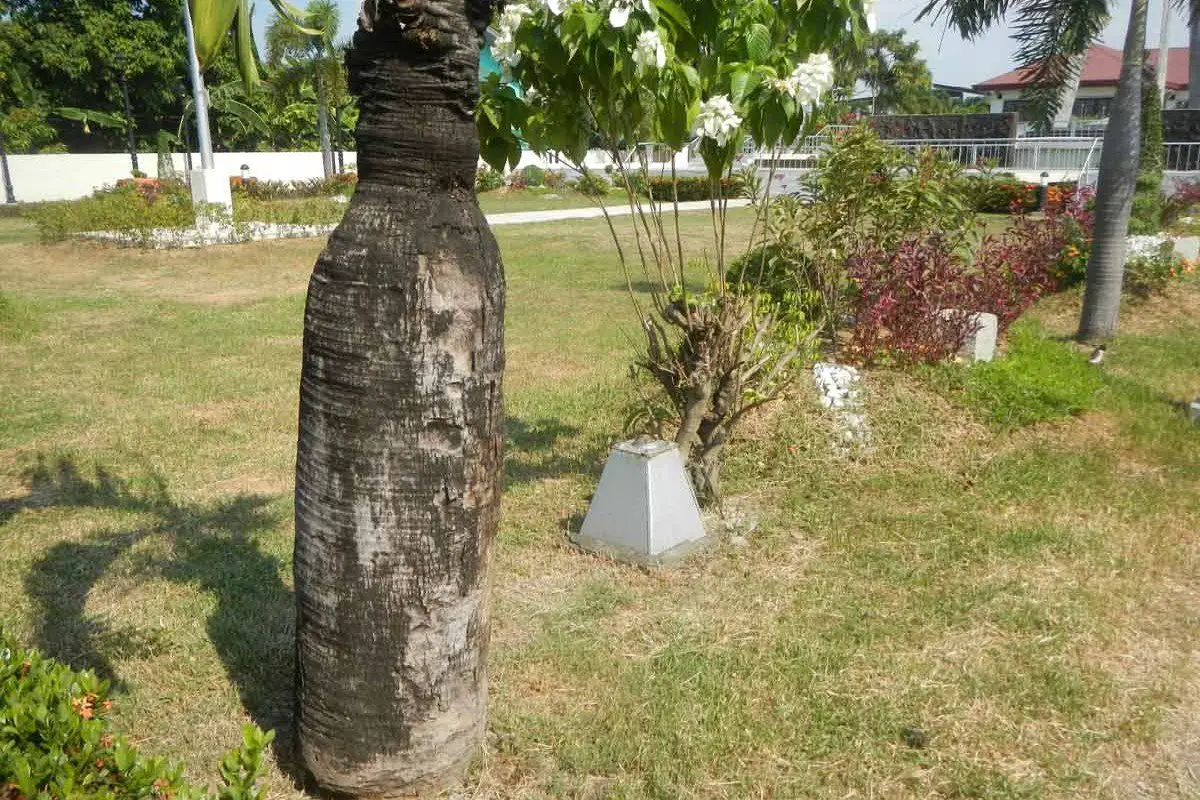
Cost: The cost of a Bottle Palm usually ranges from $40 to $60.
Bottle Palms are recognizable for their distinctive look, which is mainly due to their trunks. Unlike other palms, the trunk of Bottle Palms bulges from the end, giving it the appearance of a bottle.
This tree can grow appropriately out of a container while remaining compact in size. When fully grown, they may reach a height of around 12 feet.
Before we move on to other aspects of the article, you should know that there are other kinds of palm trees as well. These include Sabal Palmetto or Cabbage Palm, Sago Palm, Queen Palm, Pindo Palm, Areca Palm, Jelly Palm, Mexican fan palm and the Royal palm tree.
If you’re interested in any of these specifically, you can always mention that in the comments and we’ll bring out a detailed article for you. We always want more people to look into planting trees, so it’d be an honor for us.
Palm Tree FAQs
What Is the Cost of Caring for an Outdoor Palm Tree?
However, you will need to consider more than just the upfront expenditures of acquiring a palm tree. Once your tree has been planted, you will need to pay for its upkeep.
Palm tree upkeep includes pruning and fertilising your palm twice a year. While your palm tree is tiny, you may handle much of the trimming on your own. However, as the height increases, you’ll need to either invest in climbing equipment or hire an expert.
Trimming higher palms costs about $60 on average, with extra charges if you have more than one tree that has to be trimmed.
How Long Does a Palm Tree Take to Grow?

The length of time it takes for palm trees to grow is mainly dependent on the variety and kind of tree. An average palm tree typically takes four to six years to develop. It may, however, take much longer depending on the type of tree.
Every palm tree, irrespective of the type you select, go through the following process while maturing completely:
1. Germination
2. Vertical growth
3. Caliper growth
4. Flowering
5. Fruiting
6. Death
Under appropriate care, a palm tree can exhibit a growth rate of 2 to 3 feet per year. However, it is important to take into account that some species of palm trees remain naturally shorter than others.
Suppose you think your palm tree’s growth is stunted. In that case, you can carefully examine your selected species’ growth rate, reach out to your local nursery or experienced arborists for feedback, and try to alleviate your palm of any potential growth stressors.
What Is the Price of a Small Houseplant Palm?
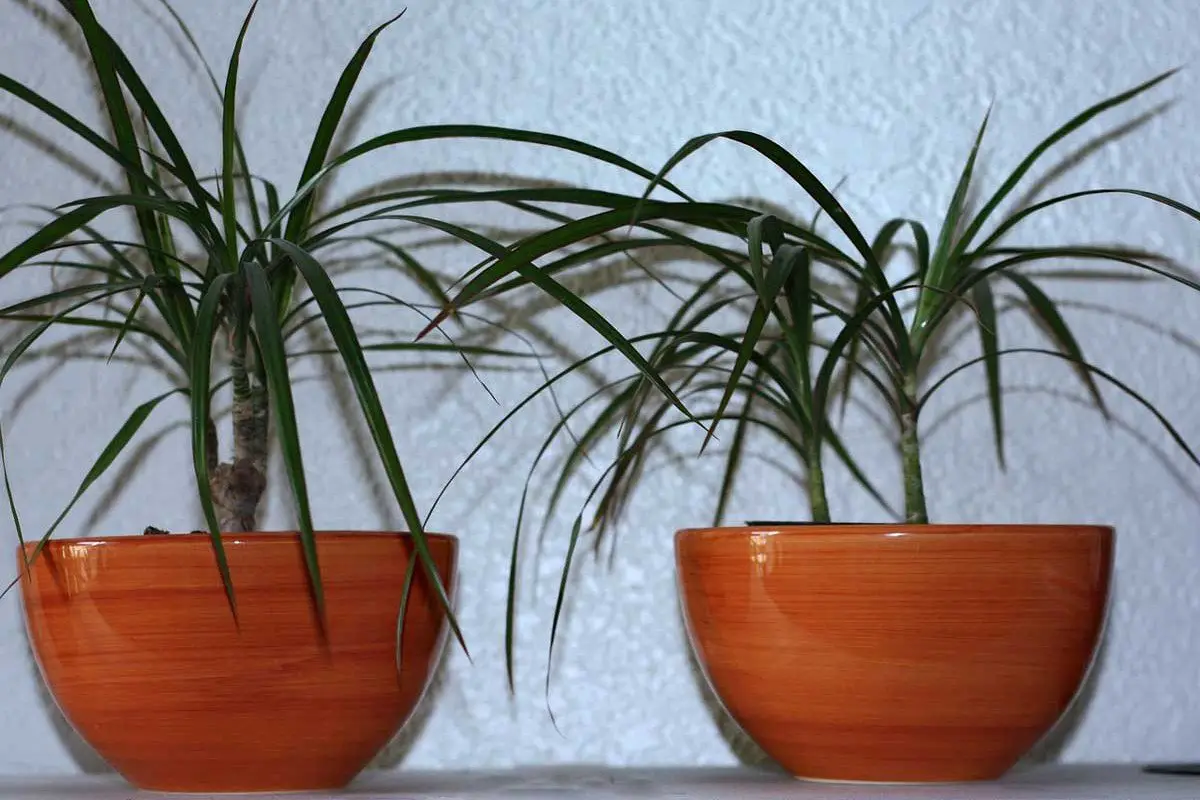
If you don’t want to invest in an outside palm, you can choose from a variety of houseplant palms instead.
Some of the slower-growing outdoor palm species, such as Bamboo Palms, can live indoors for several years until they need to be transferred outdoors.
On the other hand, other species can complete their whole life cycle without ever leaving your kitchen or workstation.
What are the costs of removing a Palm tree?
Maybe you want to change the landscaping, or your palm is cluttering up the view. I’d personally prefer a landscape change around the tree rather than cutting it down.
If it’s a very large palm, you could also look into a tree trimming service as an alternative.
Anyways…so here goes
Palm tree removal cost is entirely dependent on the type and size of the palm. Some other factors include the height of the tree, the diameter of the tree, the condition of the palm, and whether other trees are in close proximity.
Palm trees around 30 feet tall may cost around $300 to have removed, while extremely tall ones can cost $1000 or more.
If you do end up removing the palm tree, remember to plant another one somewhere.

